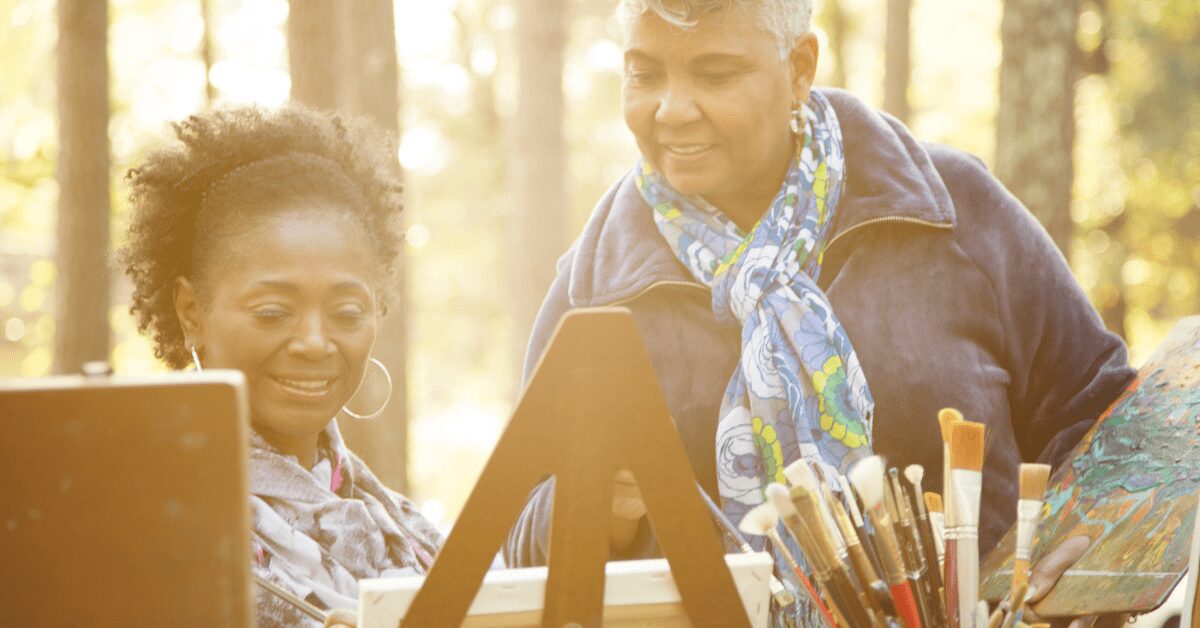As we approach Christmas 2020, churches may be searching for creative ways to stay connected even when physically distant during the pandemic. With a little intentionality and ingenuity, public art can not only help keep the holiday spirit alive but give us a new perspective on what’s possible.
Art can curate fear or hope
We’ve already seen this happen for years during the Halloween season with parking lots extravagantly decorated for trunk-or-treat events or drive thru “haunted houses” at pumpkin patches and cornfields evoking shrieks and shrills—but what if we designed these spaces to bring us hope and joy?
This summer I collaborated on such a project with friend and storyteller John Noltner of The Peace of My Mind Project. He interviewed and photographed community members affected by the murder of George Floyd and shared their voices through an art installation featuring their quotes, portraits, and an original song I contributed.
This has since been displayed throughout the country from Our Saviour’s Lutheran Church in Minneapolis, MN, to the Holocaust Museum in St. Petersburg, Florida, sparking healing conversations and deeper empathy. Whenever art is raw and vulnerable it has the power to create a space with less ego and defensiveness and more authenticity, compassion, and curiosity.
Art can be a pathway to connecting our stories
Churches can facilitate the same kinds of experiences through public art installations. Families could watch the story of Mary, Joseph, and baby Jesus unfold right before their very eyes through paintings, photographs, or videos projected on the outside of a building or placed along a self-guided pathway. Narration and music, live or pre-recorded, could help immerse congregants in the biblical world of singing angels and bewildered shepherds.
Art installations can be set up as one-time exhibits or a series of ongoing experiences inviting onlookers to become active participants in the Nativity.
If the art is interactive, attendees can place their own gifts at the foot of the manger, write prayers of hope on stars to be hung on a night sky backdrop, or peer into windows and mirrors outside the walls of a crowded inn. An uncertain father, an anxious teenage girl, or a fearful child can find reflections of themselves in the intentionally crafted representation of the Holy Family. It can bring new meaning to bearing witness to the Gospel, making us feel more alive and less alone in an otherwise cold and isolating time.
Art can be a space of healing and transformation
The impact of exhibits and installations can extend beyond a single encounter. Exhibits and installations can serve as catalysts to bigger conversations, inviting us to ask challenging questions and address hard truths.
As congregants and community members are engaged in an art display, they can be given conversation cards with prompts and questions to take home afterward or their tour can be followed by a panel or small group discussion online. Including scripture can be an opportunity for faith formation or theological exploration.
The experimentation and innovation doesn’t have to end with the Christmas season. There are always more possibilities to enliven the stories of the Bible through dynamic art installations enhanced by leaders giving the space to process.
This entire process can be empowering and transformative for both those designing the space and those participating in it. Whenever art is responsive, it can help us remove barriers and build bridges within ourselves and our communities during a global pandemic and beyond.



